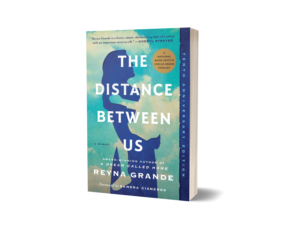Author Reyna Grande Visits Villanova University
Here is a wonderful article about my visit to Villanova, which will go down in history as one of my favorite schools to visit. A gorgeous university with a small student body. It made me want to be a student again so that I can go study there!
Author Reyna Grande visits Villanova for One Book One Villanova 2015
VILLANOVA >> The town of Iguala, Guerrero, about 2 ½ hours by bus from Mexico City, is thousands of miles away and a world apart from the Main Line, but it was brought vividly close last week through the words of a speaker at Villanova University.
Putting aside the politics of the day on immigration, author Reyna Grande offered a uniquely personal perspective on what drives some from her native country to risk so much – even the closest of family bonds – to follow a dream of a better life on El Otro Lado, “The Other Side,” of the border with the United States.
There were no questions about presidential candidates or walls on Sept. 10, when Grande, the author of One Book Villanova’s 2015 selection, “The Distance Between Us,” spoke to an overflow crowd of hundreds at the Connelly Center.
Instead, Grande talked candidly about the poverty of her childhood, the risky crossing that brought her, not yet 10, to America illegally, the opportunities that she eventually found here, and the forces that still pull her between her two homes.
The event was the first in the university’s annual St. Thomas of Villanova Celebration, honoring the Spanish saint who worked to “lift up the poor,” and culminating on Sept. 12 with Villanova’s annual Day of Service [See C9].
The 11th book to serve as a springboard for discussion across the university community, Grande’s 2012 memoir is “a difficult read,” Villanova’s president, Fr. Peter Donahue, said in greeting the gathering; not difficult to understand, he clarified, but “a tough story to take in.”
Grande was 2 in 1978 when her father left Iguala and his family to find work in Los Angeles. Mexico was in the grip of its worst recession in 50 years, the beginning of “the wave that has brought immigrants [to America] for four decades,” she explained.
Two years later, Grande’s mother followed, leaving her and older sister Mago and brother Carlos with their resentful paternal grandmother. Left largely to fend for themselves, it fell to Mago, at 8, to take on the role of their “little mother.”
Her husband having left her, their mother returned 2 ½ years later. Discontented and bitter, she again left her children – including new baby sister, Betty – repeatedly to follow a man or simply an escape.
There were small pleasures in the life of the town, as well as kindness from their maternal grandmother, a local healer, who next took them in, so that Grande can remember it, with the mountains that surround it, as a place of “broken beauty.”
The second chapter of her life began when her father returned in 1985 to bring the three oldest children back with him to the United States, paying to smuggle them across the border. Through the Reagan Administration’s amnesty program, the would all later gain citizenship.
For Grande, her father’s insistence on education as a route upward would pay off, as she became the first in her family to graduate from college. But is a mark of the struggles of assimilation that, more than 20 years later, she still holds that distinction. In those early years after her arrival here, her father’s strictness turned to violence with his alcoholism, leaving the family estranged again.
In a compelling portion of her talk, Grande described the “different city” that Iguala is today. If anything, children there grow amid even greater poverty and new violence. The town that was once known as the birthplace of Mexico’s national flag has now been called the Cuno de Asesinos, “The Birthplace of Killers,” after the disappearance and presumed murder of 43 college students who had planned a protest.
Grande said mass graves have been found near the city, and the fields around it are now used to grow poppies for the heroin trade under the control of a drug cartel. “There are crosses in the intersections and bullets in the buildings.”
Asked how she thinks her life would have been different if she had not left her town, it would be “what I just showed you,” she said: “violence, poverty and instability.”
Grande said she wrote “The Distance Between Us” because “I wanted to say something about the immigrant experience. When you hear about it, it’s often the numbers, the statistics,” not “about human beings.”
“I wanted it to be about my family’s journey,” how immigration too often “attacks the family unit,” she said. And, something new, “I wanted to write from the child’s perspective.”
“I think of my life as a before and after,” Grande said, adding that it is important to understand that “an immigrant’s journey doesn’t begin at the border. It begins much earlier.”
On a personal level, “My childhood in many ways was defined by my parents’ absence,” she told her audience. But in a way, by writing the book, she was forced to reflect on her earliest years, to really try to study her parents’ decisions, and – as a writer – see them as characters in her story.
“It helped me to answer my question why? What drove them to come to the United States and leave us behind?” Grande said, and perhaps help others to see “the price that immigrants pay in exchange for the American Dream.”
It is a story that will only become more important to comprehend, Chris Cotwicki, the Villanova senior who introduced Grande suggested, when he said, “The American story of the new millennium is the story of the Latino immigrant.”
One Book Villanova 2015 will include other programs and presentations related to “The Distance Between Us” in coming months.
For more information and to learn about events open to the public, check back athttp://www1.villanova.edu/villanova/onebook.html.


